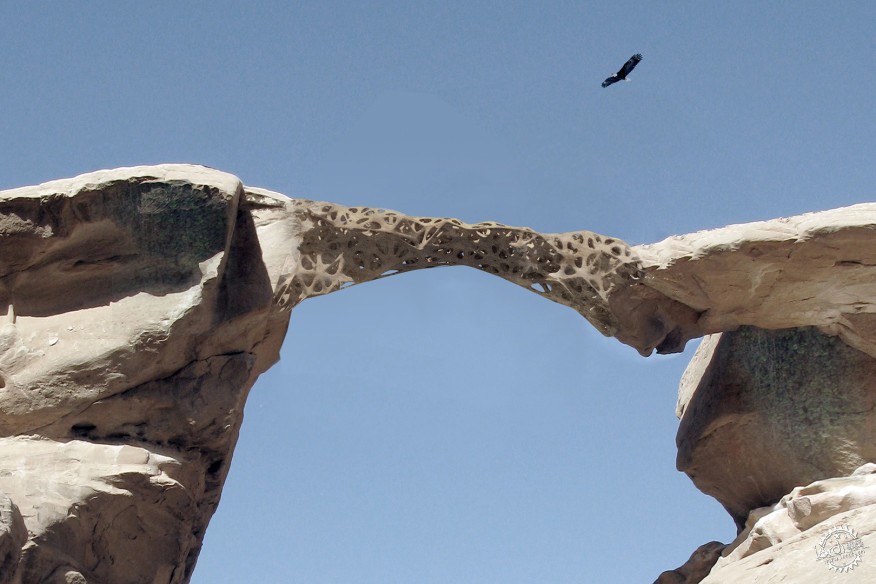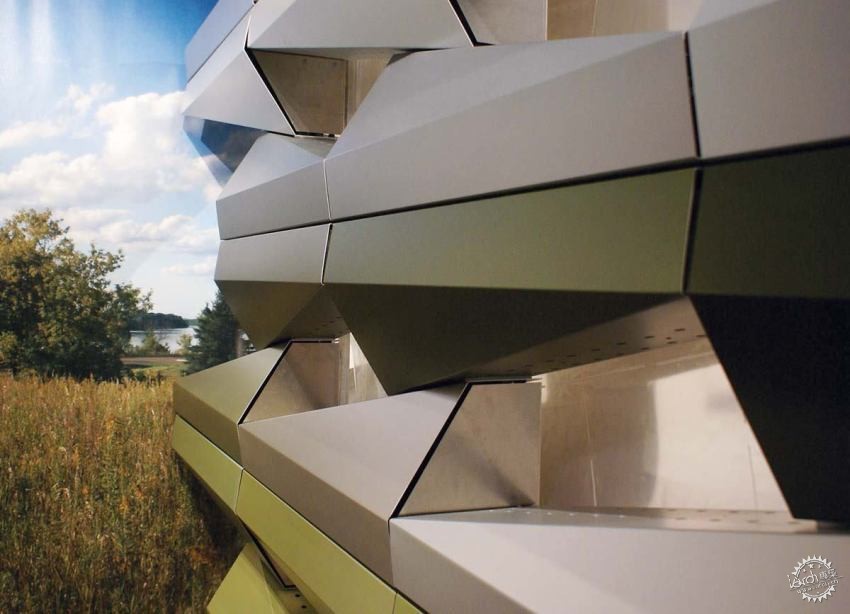Natural Resources as Architectural Capital
由专筑网雷军,刘庆新编译
更好的基层业务实践可以帮助该部门实现环境可持续发展的目标
Better baseline business practices could help the sector achieve its environmental sustainability goals.

本月早些时候在巴黎达成的气候协议标志着一个前所未有的里程碑——与195个国家共同致力于预防措施,防止气候变化和减轻其不利影响,如资源枯竭等。这一里程碑式的成就激励我们考虑在设计学科中我们可以达到什么样的目标。只要有目标,我们就可以解决。我们应该采用一个怎样的合作方式呢?
在最近的一篇文章中,我分享了在可持续发展的基础上的案例,如净零能耗和消除红色名单化学品。这些个人目标是重要的,我们也认为它们是至关重要的,为自然成本的概念提供了这样一个框架。由英国经济学家舒马赫在1973年提出,自然资本的创造是指一种生态系统评价方法,认为地球的自然资源作为经济可行性的基础上服务经济,换句话说,我们的森林、空气和水的健康,与我们的市场有直接的关联。例如,一个森林如木材作为短期的利益,如空气和水的净化作为长期的利益。如环境经济核算的联合国系统的全球标准(SEEA)的存在使我们的自然资本得到平衡。SEEA分为生态系统服务,这是自然生态系统提供可衡量的好处。
从建筑师的角度来看,一个理想的环境目标是全面地思考一个项目的自然资本。这样的做法需要项目团队建立超越经济学的工作计划和整体的系统,认可选址的自然价值。后者需要跨学科的合作,因为准确的生态系统计算和创新的设计理念的产生需要建筑师和设计团队之间的密切合作。
联合国千年生态系统评估提供了一些指导。在2001年推出,跨国公司共同努力来分析人类的环境影响,这有助于更好地了解生态系统服务的深度和广度。MA阐述了四类生态系统服务:配置、调节、文化和支持服务。我将简要地描述每一个例子,设计团队可能会使用创新的方法来解决。我曾尝试从简单到困难的类别来分析,把我们所知道的和我们仍然需要学习的差距提出来。
The climate deal reached earlier this month in Paris marks an unprecedented milestone, with 195 nations committing collectively to preventative measures that stand to scale back behaviors facilitating climate change and mitigate some of its most adverse effects, such as resource depletion. The landmark achievement inspires us to consider what goal we might attain in the design disciplines. What similarly ambitious objective could we address, and could we do so in a more collaborative fashion than the way in which we currently operate?
In a recent article, I shared examples of radical innovation in sustainability based on familiar targets such as net-zero energy consumption and the elimination of red-list chemicals. Although these individual goals are important, it is crucial that we contextualize them, and the concept of natural capital provides such a framework. Coined by the British economist E. F. Schumacher in 1973, the term natural capital refers to a method of ecosystem evaluation that considers the earth’s natural resources as the basis for economic viability—in other words, the health of our forests, air, and water is directly linked to that of our market. A forest, for example, includes short-term provisions, like lumber, and long-term benefits, like air and water purification. Global standards such as the United Nations’ System of Environmental-Economic Accounting (SEEA) exist to keep our natural capital in balance. SEEA is divided into ecosystem services, which are the measurable benefits provided by natural ecosystems.
From an architect’s perspective, an aspirational environmental goal would be to apply natural capital thinking comprehensively to a project. Such an approach would require project teams to think beyond the pure economics of a job to plan and build within a holistic system that considers a site’s natural value. The latter necessitates interdisciplinary cooperation, since accurate ecosystems accounting and the generation of innovative design ideas require close collaboration between the architect and design team.
The United Nations' Millennium Ecosystem Assessment (MA) offers some guidance. Launched in 2001, the multinational endeavor was developed to analyze humanity’s environmental impact and help to better understand the depth and breadth of ecosystem services. The MA outlines four categories of ecosystem services: provisioning, regulating, cultural, and supporting services. I will briefly describe each here, with examples of how design teams might use innovative approaches to address each category. I have attempted to order the categories from easy to challenging, revealing the wide gap between what we know and what we still need to learn.

建筑师和设计师都了解文化服务。根据MA,这些都是从生态系统中获得的非物质利益,在精神上的丰富、认知发展、反思、娱乐等审美体验。自然为我们提供了灵感、文化遗产、知识系统的发展,娱乐和意义上的利益。建筑师们努力利用这些价值来实现他们自己对建筑环境的贡献。最近的一个例子是伦敦Heatherwick Studio的花园桥,366米(1200英尺)的长度跨越城市的泰晤士河。传统意义上来说,建筑师没有美化桥梁设计,但给出新的提议,文化上注重绿色空间的密集的城市,保留现有结构不拆除。
Cultural services are intrinsically understood by architects and designers. According the MA, these are non-material benefits obtained from ecosystems in the form of spiritual enrichment, cognitive development, reflection, recreation, and other aesthetic experiences. Nature provides inherent benefits in terms of inspiration, cultural heritage, knowledge systems development, recreation, and sense of place. Architects strive to harness this value in their own contributions to the built environment. One recent example is London-based Heatherwick Studio’s proposed Garden Bridge, a 366-meter (1,200-foot) public park spanning the Thames River in the city. Conventionally, bridges are designed without landscaping but the architect’s novel proposal offers new, culturally significant green space in the midst of a dense city—all without removing existing structures.

我们从生态系统中获得的产品是原料、水、食品和能源。除了资源生命周期以外,他们都被一个典型的设计团队所理解。我们普遍认识到环境资源的重要性,使用回收的产品,节约能源,等等采取了自然资本框架的项目。我们提出了一种更积极的方法来维护和重新使用现场资源,我们可能会在现有的与生成的配置服务进行分类。例如,长期的适应性再利用项目四合院,从北京的建筑事务所,使岌岌可危的胡同或狭窄的小巷开通使用,以最小的额外资源使破旧房屋变成有用的场所。在更大的现场制造工艺,如黄蜂的泥挤压三维打印机,使建筑组件为本地供应服务。在其他方面,设计团队也应考虑补充或增加选址的可持续性发展,如种植树木或现场蓄水湿地建设。
Provisioning services are products such as raw materials, water, food, and energy that we obtain from ecosystems. They are well-understood by a typical design team, with the exception of one aspect: resource life cycles. Although we generally recognize the importance of being environmentally resourceful—using recycled products, conserving energy, and so forth—adopting a natural capital framework to a project site brings an intensified focus to provisioning services. This focus suggests a more aggressive approach to preserving and re-using onsite resources, which we might categorize in terms of existing versus generative provisioning services. For example, the visionary adaptive re-use project Courtyard House Plugin, from Beijing-based People's Architecture Office, makes enlightened use of crumbling hutongs, or narrow alleys, transforming dilapidated housing into useful contemporary habitats with minimal additional resources. On larger jobs with accessible earthen materials, onsite fabrication processes like this sprayed stone from 2012 (shown below) or WASP's mud-extruding 3D printer enable the construction of building components from hyper-local provisioning services. On the generative side, design teams should also consider replenishing or augmenting sites with provisioning services for future use, such as planting trees or constructing wetlands for onsite water storage.

调节服务是基本过程,但他们往往错过了最好的设计机会。这些服务是从持续的监测和维护的生态系统过程的基础上开展的,如空气和水的净化、气候调节、风暴保护、废物处理和授粉的好处。景观建筑师可以起领导作用,以确定一个选址的调节服务潜力和发展创新的设计策略,和可衡量的结果。这种策略往往代表各种设计的重叠,例如,绿色的屋顶和垂直的花园,支撑着其他重要的调节服务。创新的材料也可以用来保持服务的目标,如气候调节。例如,碳水泥比波特兰品种更能避免二氧化碳硬化。另一个例子是在建筑围护结构中所见到的休斯敦和明尼阿波利斯——以斗篷墙漆变色的使用为实践基础,外表面可自动调整来改善建筑热工性能和降低城市热岛效应的季节变化带来的影响。
Regulating services are fundamental natural processes yet they are frequently missed design opportunities. These services are benefits received from ongoing monitoring and maintenance of ecosystem processes, such as air and water purification, climate regulation, storm protection, waste treatment, and pollination. Landscape architects could lead a collaborative effort to identify a site’s regulating-service potential and develop creative design strategies with measurable outcomes. Such strategies often represent disciplinary overlaps—for example, green roofs and vertical gardens support many important regulating services. Innovative material approaches may also be utilized to maintain service goals such as climate regulation. For example, the carbon-negative Ferrock cement is stronger than the Portland variety and sequesters carbon dioxide as it hardens. Another example is the use of thermochromic paint on building envelopes—as seen in Houston- and Minneapolis–based HouMinn Practice’s Cloak Wall, the façade of whichautomatically adjusts to seasonal changes to improve building thermal performance and reduce urban heat-island effect.

支撑服务是最不易于实现的生态系统服务,这是最大的传统设计实践和生态思维之间的脱节。这些服务功能作为所有其他生态系统服务的必要基础,包括初级生产、营养和水循环、氧气生产、土壤形成,和栖息地的配置。根据MA,这些服务在时间和空间上是很难协调的,因为支撑服务对个人的影响是间接的,或以较长的时间发生,而其他类别的影响更直接,并且出现在短期内。然而,解决这些服务有设计实例。例如,飞利浦设计的2011种微生物的家——从摇篮到摇篮营养管理系统,包括用于餐厨垃圾厌氧发酵沼气池;方案设计室内厨房可以扩大到包括现场土壤形成和粮食收获。设计师们也越来越关注栖息地的配置,用建筑围护的策略,保护当地以及迁徙的野生动物。另一个例子是织机工作室,有突起支撑着鸟筑巢砌体单元。另一个是第三性项目如系统再生工业木材支持鸟类和昆虫居住——由在明尼苏达大学建筑系就读的学生与我的工作室,美国建筑师协会会员希拉甘乃迪和福拉诺共同学习开发。
然而作为项目基础的生态系统服务会计有其局限性。生态系统的边界不在给定的项目之内,因此设计团队只能解决一个狭窄的和人为的生态系统的部分。另一个挑战问题的复杂性和生态动力学的不可预测性,尤其是支撑所有其他生态系统服务的配套服务。还有,建立有价值的生态系统服务,以塑造建筑环境也很有挑战性。首先,一个自然资本基础框架就与传统相悖,如能源、材料、室内水质,并揭示了它们是如何相互依存的。其次,在设计过程中采用这样一个框架,需要跨学科的合作,因为各个学科代表在生态环境中的人为强加的边界。第三,采用生态系统服务的项目需要我们从自然到人工二元的思维转变,即所有的环境效益来自原有的景观,来自于一体化的概念,特别是标志着生态功能的新的建筑和景观。
在设计中采用一种自然资本框架,将成就一个更具包容性和现实的项目前景。它以扩大的概念,选址的最高程度和最佳的使用远远超出了房地产经济的变幻莫测的相关生态会计。设计团队可以通过开展生态系统服务评估,然后创建一个投资组合的生态系统服务策略,以指导该项目未来的发展。这将为一个项目的最终成功提供一个设计决策和措施。对于这样一个整体框架,设计委员会将需要大量的时间、精力和协作。但如果为保护环境世界各国能够走到一起,那么建筑师就可以省下很多力气了。
布莱恩布劳内尔,是AIA一个特色专栏作家。他的文章每个星期出现在这个网站。他的观点和结论并不一定代表建筑师杂志,也不代表美国建筑师协会。
Supporting services are the least understood of ecosystem services, and they reveal the largest disconnect between conventional design practices and ecological thinking. These services function as the necessary foundation for all other ecosystem services and include primary production, nutrient and water cycling, oxygen production, soil formation, and habitat provisioning. These services are the most difficult to pin down in time and space because, according to the MA, the impact of supporting services on individuals is indirect or occurs over an extended period of time, while the other categories’ impacts are more direct and occur in the short term. Nevertheless, there are design examples that address these services. For example, Philips Design’s 2011 Microbial Home is a cradle-to-cradle nutrient management system and includes a bio-digester for the anaerobic fermentation of food waste; although the concept project is designed as an interior kitchen, the strategy could be expanded to include site-based soil formation and food harvesting. Designers are also increasingly paying attention to habitat provisioning, with building envelope strategies that support local as well as migratory wildlife. One example is Loom Studio’s Egg Block, a masonry unit with protrusions that support bird nesting. Another is a collection of so-called third-nature projects—such as envelope systems made of reclaimed industrial wood that support bird and insect habitation and developed by University of Minnesota architecture students in a studio that I co-taught with Sheila Kennedy, FAIA, and Frano Violich, FAIA.
Project-based ecosystem services accounting has its limitations, however. Ecological systems boundaries do not end at the property line, so in a given project, design teams can only address a narrow and artificially imposed section of an ecosystem. Another challenge concerns the complexity and inscrutability of ecosystem dynamics, especially regarding the supporting services that underpin all other ecosystem services. Still, there is merit to using ecosystem services to shape the built environment. First, a natural capital-based framework pulls together conventionally disparate concerns like energy, materials, and indoor water quality, and reveals how they are interdependent. Second, employing such a framework in the design process requires interdisciplinary collaboration, since disciplines also represent artificially imposed boundaries in ecological terms. Third, adopting ecosystem services as project-drivers shifts our thinking from dichotomous notions of natural versus artificial, whereby all environmental benefits come from the preexisting landscape, towards integrative concepts in which new buildings and landscapes serve as platforms for ecological enhancements—particularly within degraded sites.
Adopting a natural capital framework in design will enable a more inclusive and realistic project outlook. It will expand the notion of a site’s highest and best use far beyond the vagaries of real estate economics to include more enduring and relevant ecological accounting. Design teams could begin each project by conducting an ecosystem service assessment, and could then create a portfolio of ecosystem service strategies to direct that project’s development. This road map would shape design decisions and provide a measure for a project’s ultimate success. Appropriating such a holistic framework for design commissions will require significant time, effort, and collaboration—but if the nations of the world can come together for the sake of the environment, then so can architects.
Blaine Brownell, AIA, is a regularly featured columnist whose stories appear on this website each week. His views and conclusions are not necessarily those of ARCHITECT magazine nor of the American Institute of Architects.
出处:本文译自www.architectmagazine.com/,转载请注明出处。
|
|
